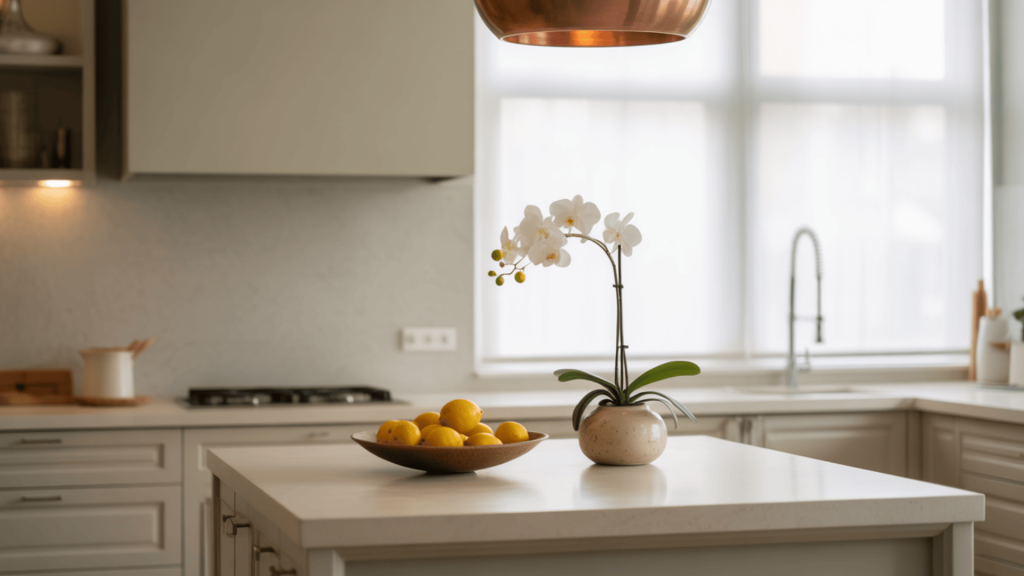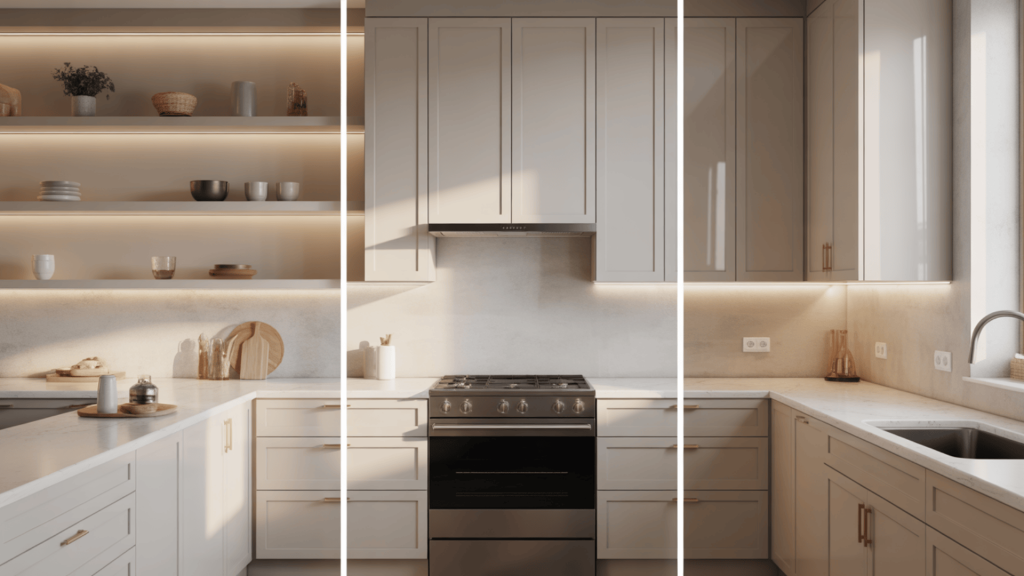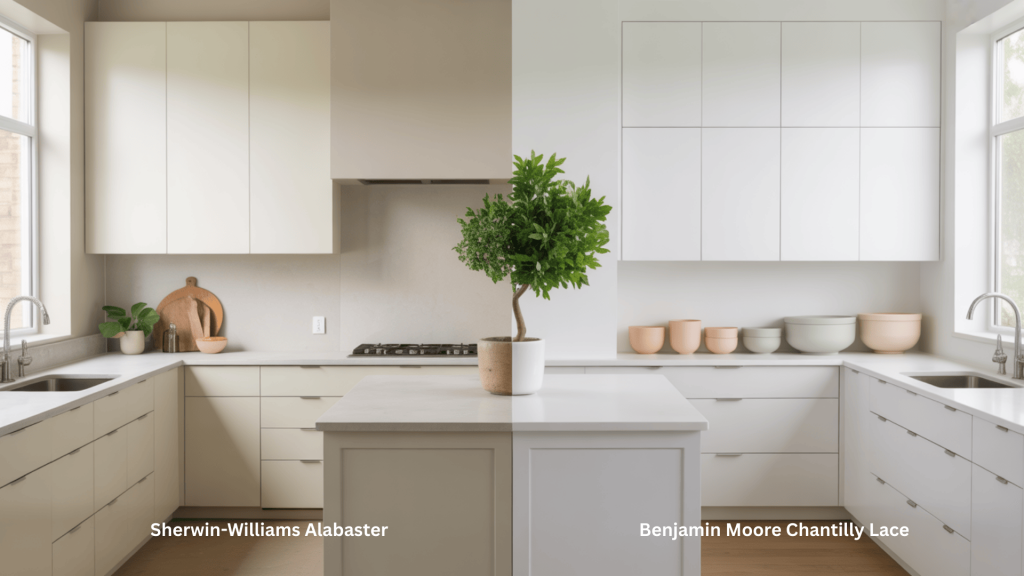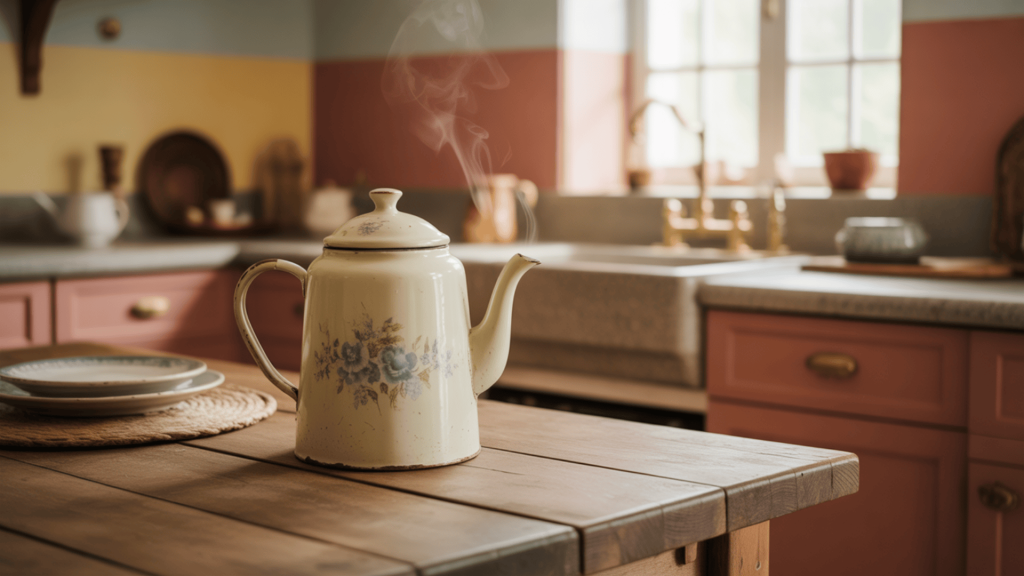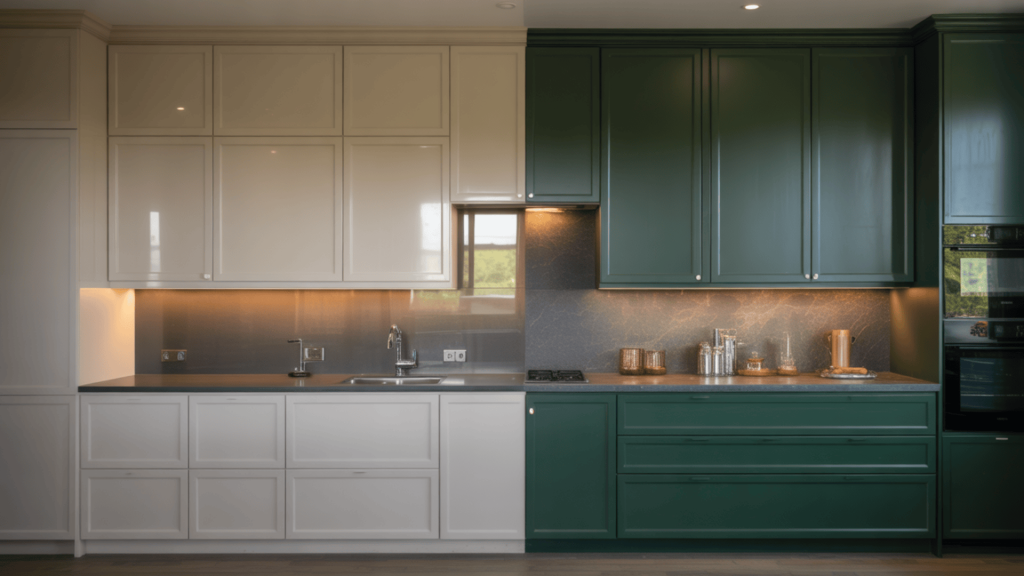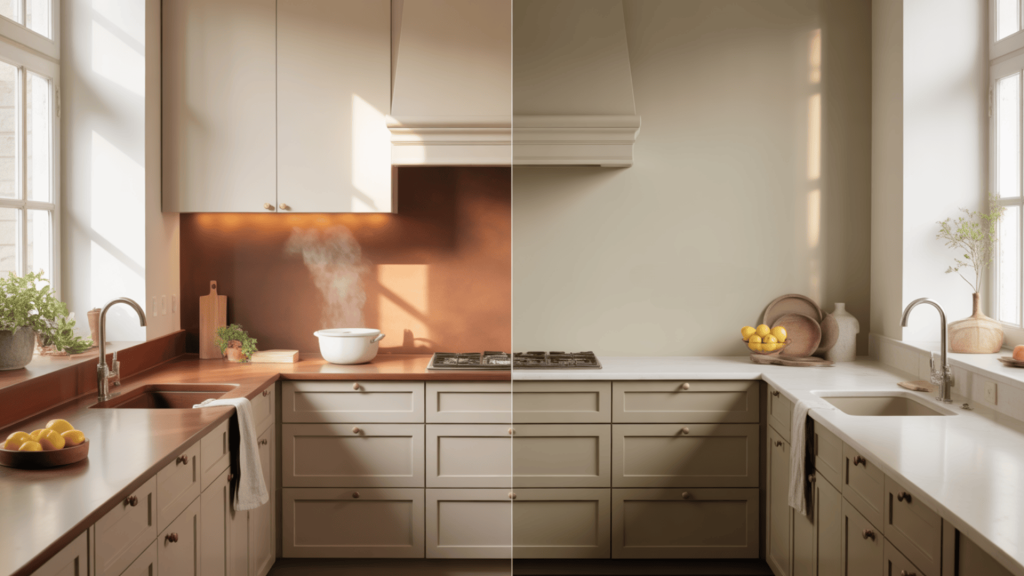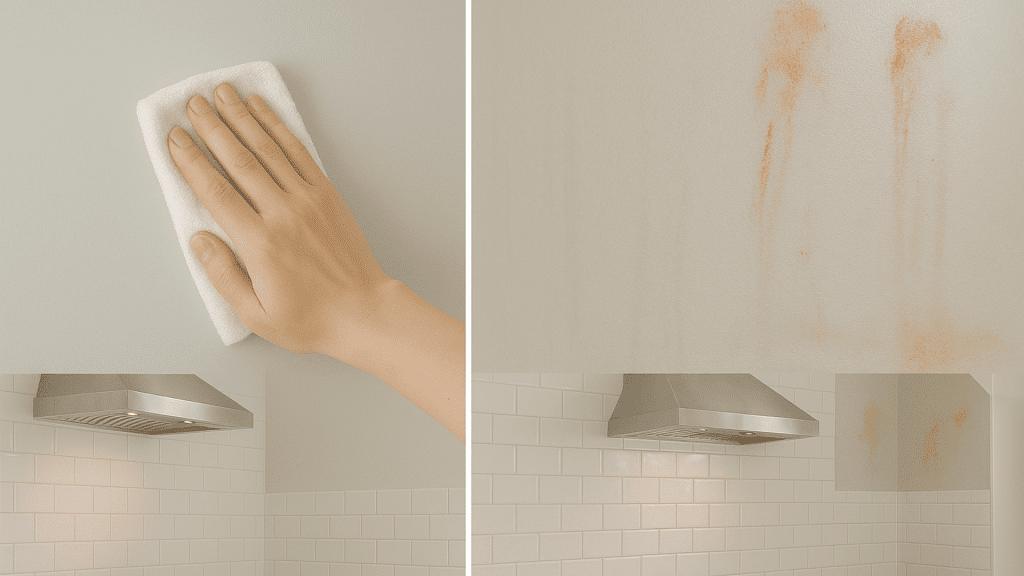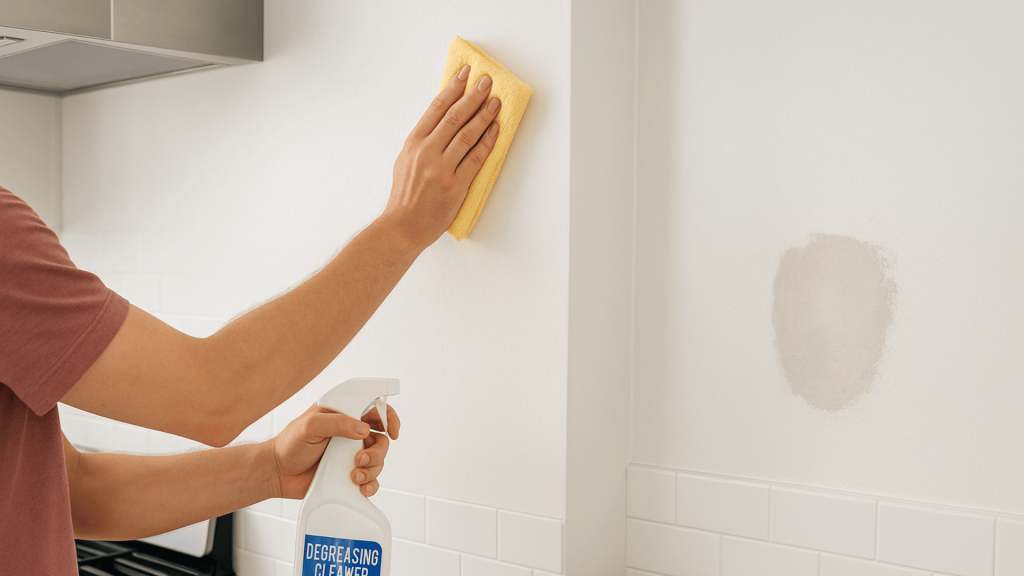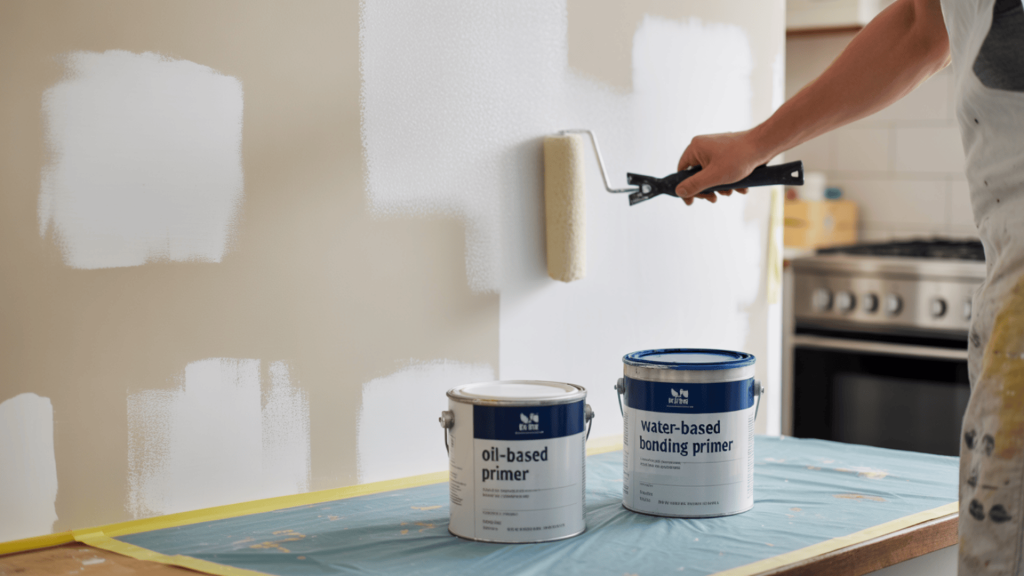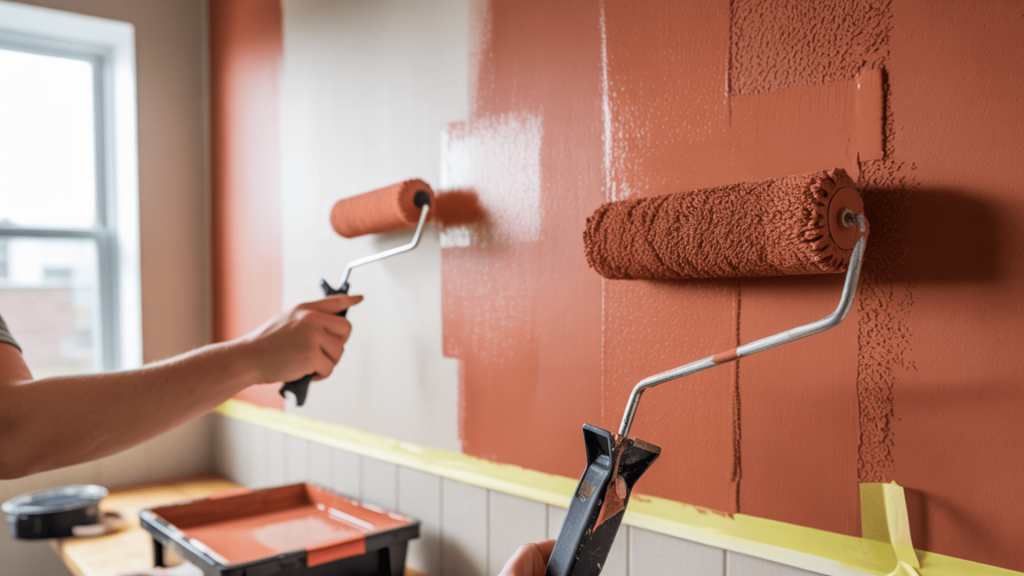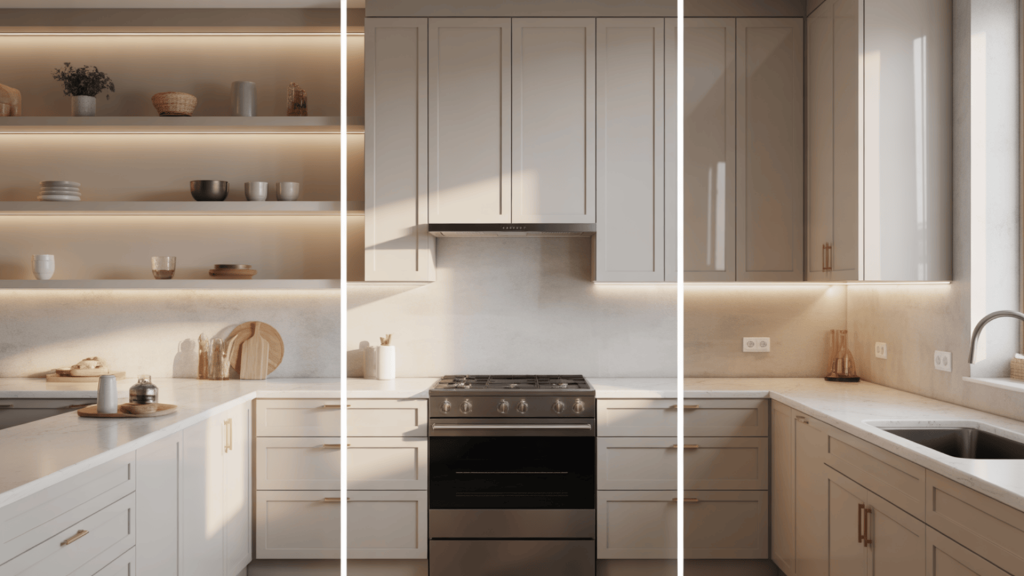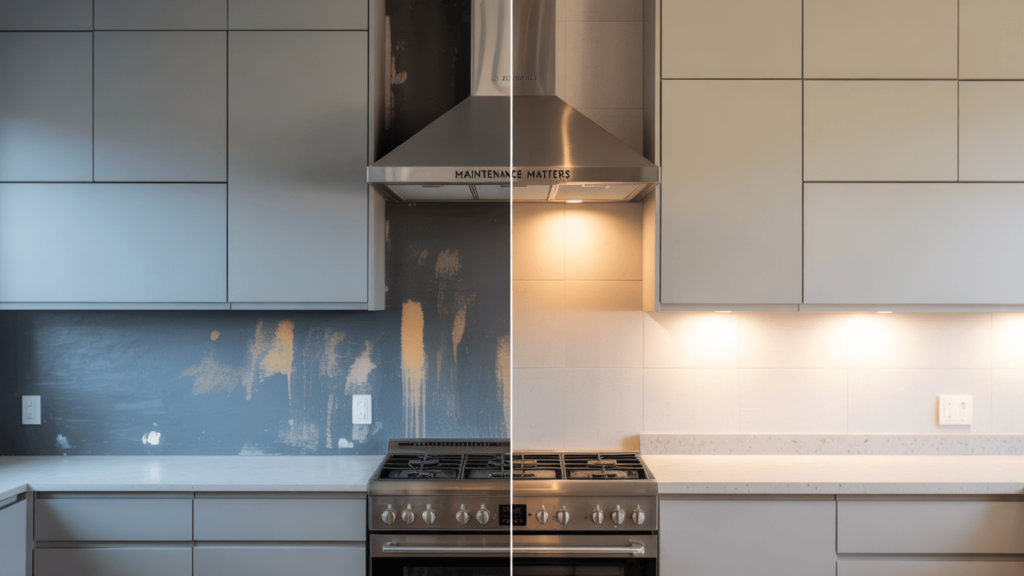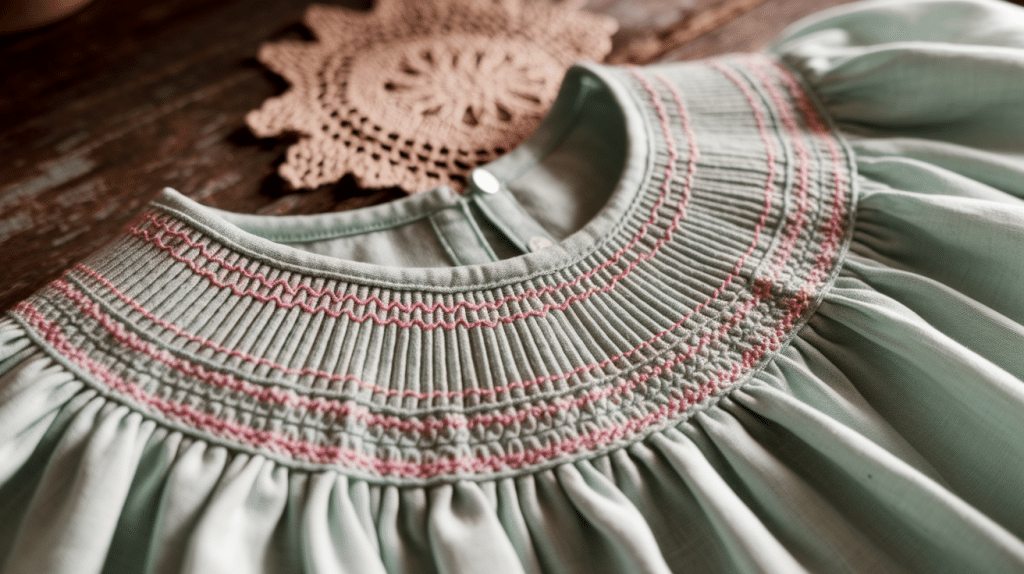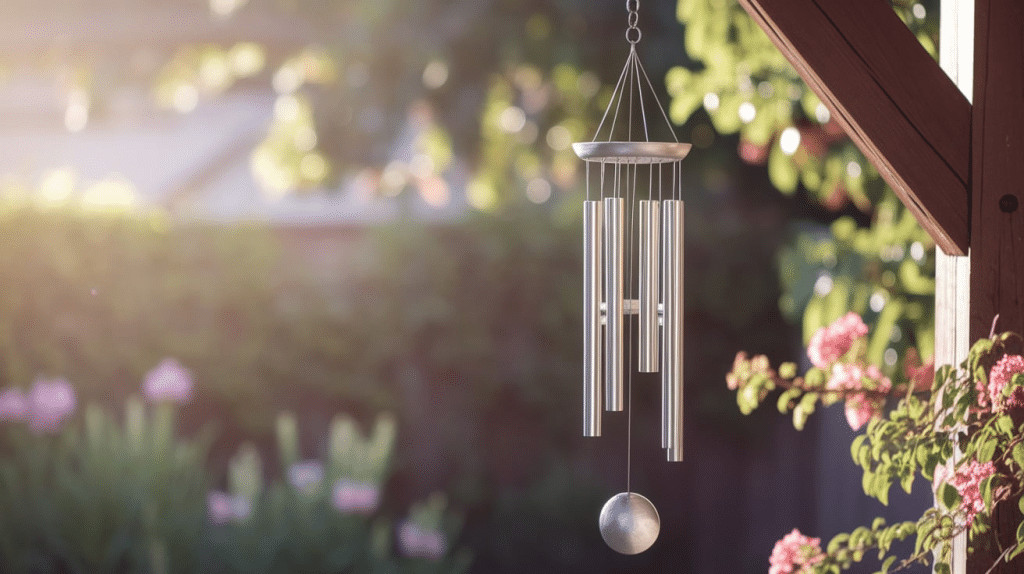Kitchen walls endure constant challenges—steam from boiling pots, oil splatters, tomato sauce mishaps, and frequent cleaning.
Choosing the right paint isn’t just about color; it’s about finding a formula that withstands these unique demands.
The perfect kitchen paint creates a beautiful space while resisting moisture, stains, and repeated scrubbing.
Many homeowners make costly mistakes by selecting paint that looks good initially but quickly deteriorates in kitchen conditions.
Professional painters consistently recommend satin and semi-gloss finishes from brands like Benjamin Moore, Sherwin-Williams, and Behr for their superior performance in cooking spaces.
The right paint choice can mean the difference between walls that maintain their fresh appearance for years and those that require frequent touch-ups.
Let’s explore the top options that deliver both beauty and function for your kitchen walls.
Best Paint for Kitchen Walls – Expert Choices
The right kitchen wall paint needs to withstand cooking messes, frequent cleaning, and daily wear.
Most experts recommend satin and semi-gloss finishes because they offer the perfect balance of durability, wipeability, and resistance to kitchen moisture.
- Benjamin Moore’s Kitchen & Bath paint offers superior durability with stain-resistant technology, maintaining vibrant color despite years of kitchen moisture and splashes.
- Sherwin-Williams ProClassic Interior Acrylic Latex Enamel delivers a durable, hard finish that resists yellowing, making it a premier choice for long-lasting cabinetry.
- Behr Premium Plus Ultra offers budget-conscious homeowners a quality paint-and-primer combination with excellent coverage and mildew resistance—perfect for kitchens with variable humidity levels.
What makes these paints worth the investment is their specially formulated binding agents, which help them stick better to walls and resist breaking down from cooking oils and grease in kitchen air.
Top Paint Finishes for Kitchens: Which One is Right for You?
Kitchen walls face unique challenges that other rooms don’t—steam, oil splatters, food stains, and constant wiping—so the finish you choose matters just as much as the color and brand.
Most kitchen painting projects benefit from finishes that balance shine with practicality.
Higher gloss means better moisture resistance and easier cleaning, but it can highlight wall flaws.
Lower sheen offers better flaw hiding but might not stand up to heavy scrubbing.
Comparing Kitchen Paint Finishes
The right finish choice can make or break your kitchen painting project.
When deciding, consider how much cooking you do and how often you clean.
Each finish type offers distinct benefits for different kitchen situations and cooking habits.
Here’s how they compare:
| FINISH TYPE | BEST FOR | PROS | CONS |
|---|---|---|---|
| Satin | General kitchen walls | Hides flaws well, soft pearl-like look, good washability | Not as moisture-resistant as glossier options |
| Semi-Gloss | Near stoves, sinks, and busy cooking areas | Superior moisture resistance, very easy to clean, highly durable | Shows wall imperfections, can look too shiny in large areas |
| High-Gloss | Trim, cabinets, accent areas | Maximum durability, excellent for high-touch surfaces | Very unforgiving on flawed surfaces, too reflective for walls |
When choosing between these finishes, consider both the practical demands of your cooking habits and the visual impact you want to create.
Many kitchens actually benefit from using different finishes in different zones based on cleaning needs.
Best Paint Colors for Kitchen Walls Based on Style and Mood
Paint color sets the tone for your entire kitchen space.
Beyond just looking good, the right color can make small kitchens feel bigger, dark kitchens feel brighter, and cold kitchens feel more inviting.
When picking kitchen colors, consider both the emotional impact and practical aspects of each shade.
Lighter colors show marks more easily but make spaces feel open.
Darker colors hide stains better, but can make small kitchens feel cramped without enough lighting.
The color you choose should work with your kitchen’s natural light, cabinet color, countertop material, and flooring to create a cohesive look.
Light Neutrals for Open, Clean Spaces
Soft whites and light grays create an open, clean feeling in kitchens.
They reflect light well, making even small kitchens feel bigger and brighter. Sherwin-Williams Alabaster offers a warm white that doesn’t feel stark or clinical.
Benjamin Moore Chantilly Lace provides a crisp, clean white that works in both modern and traditional settings.
These light neutrals provide an excellent backdrop for colorful accents, allowing you to change small kitchen items without repainting the entire space.
Warm Colors for Cozy Cooking Spaces
Soft yellows, gentle oranges, and muted reds can make kitchens feel cozy and welcoming.
These warm tones complement wood cabinets and bring out the warmth in many counter materials.
They also hide minor stains better than stark whites.
Just be careful with very bright or intense warm colors, as they can sometimes make a space feel smaller or closed in without enough natural light to balance them.
Best Paint Brands for Kitchen Walls
Not all paints hold up equally in kitchen environments.
Brands formulate their paints differently, with some specifically designed to withstand the unique challenges of cooking spaces.
The right paint should resist moisture, fight stains, clean easily, and maintain its color despite exposure to cooking oils and steam.
It’s worth spending a bit more on quality paint for kitchens since cheaper options often require more frequent repainting.
Sherwin-Williams: Duration Home and Emerald
Duration Homeby Sherwin-Williams contains antimicrobial additives that help prevent mold and mildew growth—perfect for humid kitchen environments. It cleans exceptionally well and resists staining from food splashes.
Emerald offers the same benefits with even better durability and a lifetime warranty. Both options come in a range of sheens suitable for kitchen use, though they are more expensive than some competitors.
Benjamin Moore: Aura and Regal Select
Aura Kitchen & Bath paint provides outstanding stain resistance and color retention. It contains mildew-resistant additives specifically for high-moisture areas and cleans up easily with just soap and water.
Regal Select offers similar benefits at a slightly lower price point. Both options feature low-VOC formulas that don’t fill your kitchen with strong paint smells during application.
Kitchen Wall Paint Durability & Cleanability Factors
A truly excellent kitchen paint must hold up to challenges that other room paints never face.
From tomato sauce splatters to grease particles in the air, kitchen walls take a beating that demands specific paint qualities.
The ability to clean your walls without damaging the paint finish remains perhaps the most important factor in kitchen paint selection.
Paint that breaks down under scrubbing will quickly look worn in cooking zones.
Testing shows significant differences in how paints stand up to repeated cleaning and typical kitchen messes.
Why Scrubbing Resistance Matters
Kitchen walls need frequent wiping, especially near cooking zones.
The best kitchen paints maintain their color and finish even after hundreds of cleanings with mild soap solutions.
Paints with poor scrub resistance might look good initially, but will quickly show wear paths where you clean most often.
In test results, scrubbing marks show up as lighter patches or streaks where the color has worn away.
Pro Tip: Look for paints specifically labeled as “scrub resistant” or “highly washable” for best results in kitchen spaces.
Prep & Application Tips for Long-Lasting Results
Even the best kitchen paint will fail without proper wall preparation and application techniques.
Kitchens present unique painting challenges due to built-up cooking residues and moisture issues that other rooms don’t have.
Taking time to properly clean and prime your kitchen walls before painting will significantly extend the life of your paint job and improve the final look.
Professional painters follow specific steps when tackling kitchen spaces to ensure lasting results.
Step 1: Cleaning and Wall Preparation
Before opening any paint can, thoroughly clean your kitchen walls with a degreasing cleaner.
Years of cooking can leave an invisible film of grease that prevents proper paint adhesion.
After cleaning, rinse walls with clean water and allow them to dry completely.
Fill any holes or cracks with spackle, sand smooth, and wipe away dust before moving to the priming stage.
Step 2: Choosing the Right Primer
For kitchens with heavy cooking residue, a stain-blocking primer helps create a clean slate for your new paint.
Oil-based primers work well for severe cases, though they require longer drying times.
Water-based bonding primers work well for most kitchen situations and dry faster.
If you have water stains or mold issues, look for primers specifically labeled to block these problems.
Step 3: Proper Application Techniques
Apply paint in thin, even coats rather than thick layers.
This helps prevent drips and allows proper curing between coats.
For smooth walls, a short-nap roller provides the best finish.
For textured walls, choose a roller with a longer nap that can reach into all the crevices.
Step 4: Drying and Curing Time
Allow plenty of time between coats—usually 24 hours is best, even if the can says less.
Kitchen paints contain special additives that need proper drying time.
Wait at least a week before heavy cleaning of newly painted kitchen walls.
The paint may feel dry to the touch, but full hardening takes time.
Common Mistakes to Avoid When Painting Kitchen Walls
Even experienced DIY painters can make errors when tackling kitchen spaces.
Knowing the common pitfalls can help you achieve professional-quality results on your kitchen painting project.
Most kitchen painting mistakes stem from rushing through preparation or choosing products based solely on price rather than performance in kitchen conditions.
Choosing the Wrong Finish
Kitchen paint finish mistakes can ruin an otherwise perfect painting project. Here are the common finish-related errors to avoid:
- Using Flat or Matte Paint on Kitchen Walls—These finishes look great in bedrooms, but they can’t handle kitchen cleaning needs and will quickly show wear marks.
- Applying the Same Finish Throughout the Entire Kitchen—Different areas face different challenges; cooking zones need higher gloss than eating areas.
- Not Matching Finishes to Specific Kitchen Zones—Areas near stoves and sinks benefit from semi-gloss, while dining nooks can use eggshell finishes.
- Selecting Finishes that Are Too Glossy for Imperfect Walls—High-gloss paint shines like a spotlight on every bump, crack, and flaw in your wall surface.
- Prioritizing Looks Over Practicality—A beautiful finish that can’t withstand cleaning will look worn within months in a busy kitchen.
By avoiding these finish mistakes and matching your paint sheen to each area’s specific needs, your kitchen paint job will maintain its fresh appearance for years instead of months.
Wrapping It Up
Selecting the optimal paint for kitchen walls balances durability, cleanability, and visual appeal.
Kitchens require specialized paints that resist moisture, grease, and frequent cleaning.
Satin and semi-gloss finishes from quality brands provide the best long-term results, and varied sheens can potentially benefit different areas.
Proper preparation is as crucial as paint selection, requiring thorough cleaning and appropriate priming.
Your kitchen walls should work as hard as you do—choose finishes that withstand splashes while setting the perfect mood.
What’s your kitchen style?
Tell us your favorite kitchen wall color and why in the comments!

